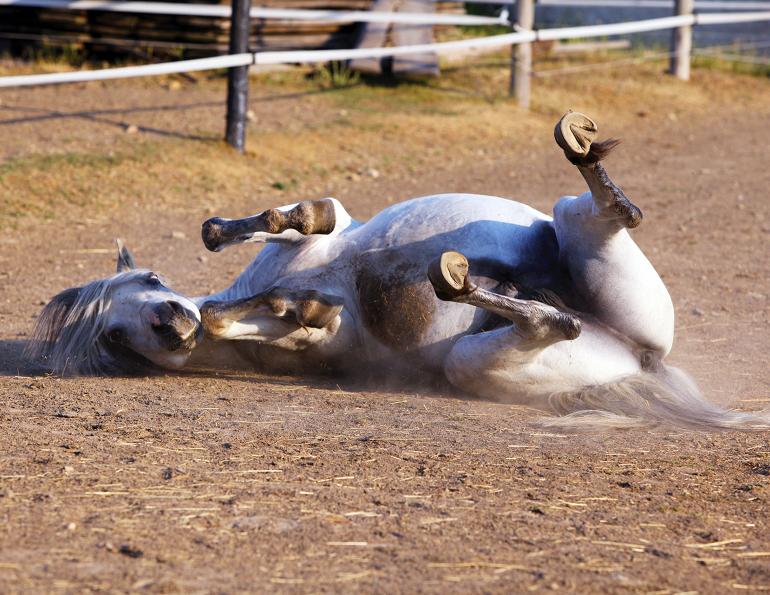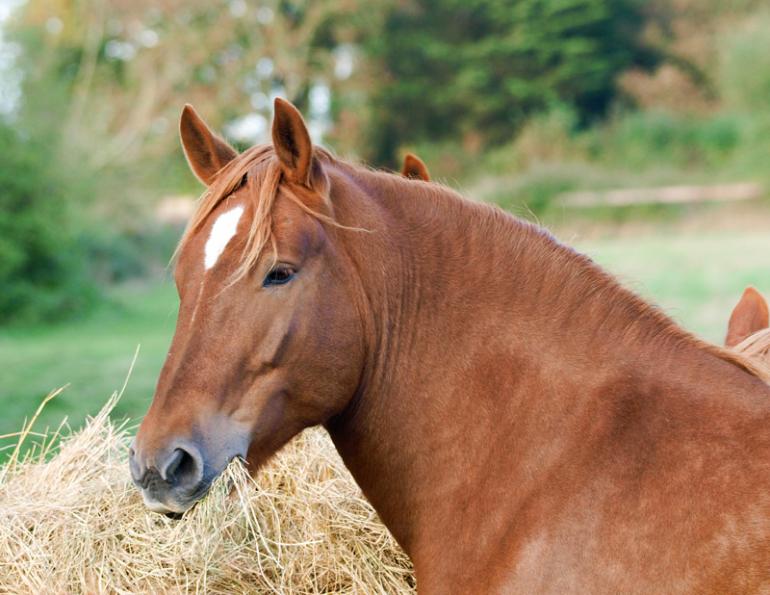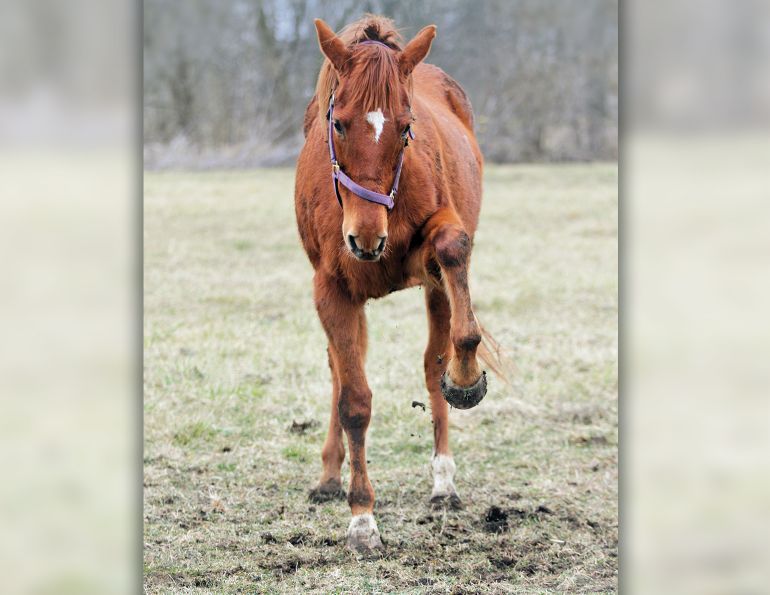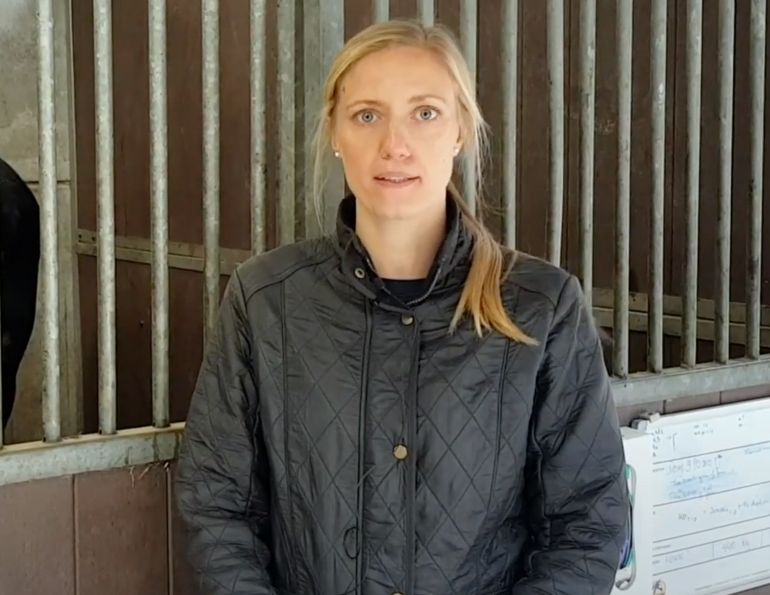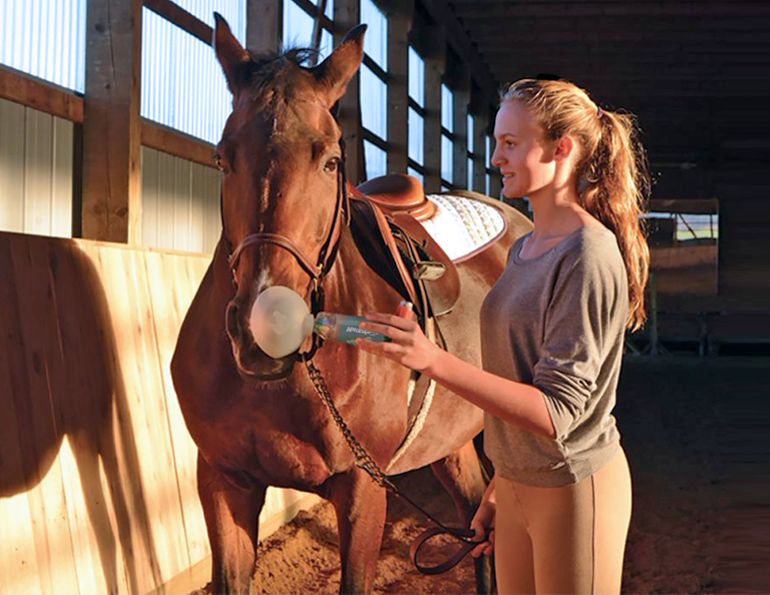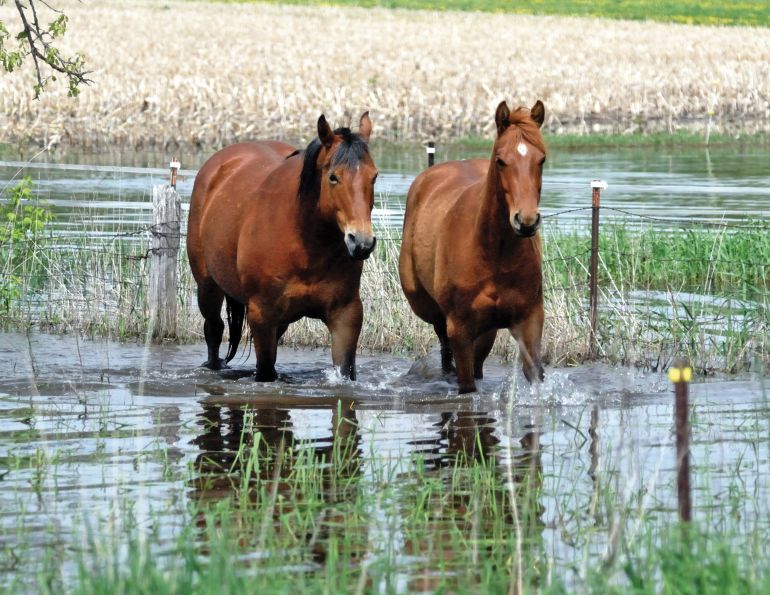By Equine Guelph
Thrush is a common hoof condition caused by a fungal infection that eats away at the tissues of the frog. It is found in the grooves alongside the frog and the cleft in the centre of the frog. If left untreated, thrush will advance deeper into the sensitive areas of the hoof and cause lameness.
Symptoms
Smell it once and it will leave a lasting impression. The classic sign of thrush is a black, foul-smelling discharge around the frog area of the sole of the hoof. The horse may be sensitive to pressure applied to the affected areas with a hoof pick, and in severe cases, manual palpation with a finger can cause pain.
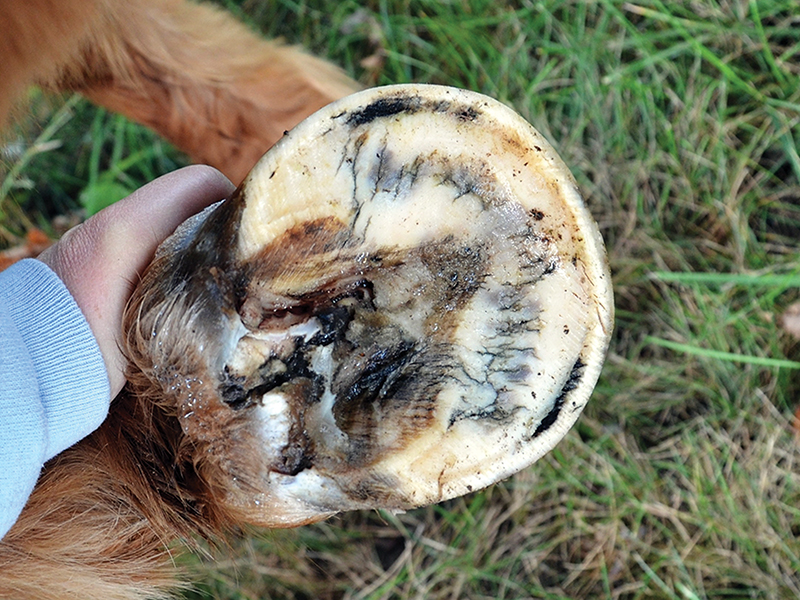
Thrush infection in the hoof of a pony. Photo: iStock/MelissaAnnGalleries
Related: Fundamentals of Proper Hoof Care
Treatment
Good stall and environment management is important. Clean the stall daily and provide clean, dry bedding. Turnout areas should be clean and free of mud and manure. Picking out the hooves twice daily to expose the affected area to oxygen will kill the fungus if caught early.
Your farrier should carefully remove all affected tissue to allow more oxygen to invade the area, so the fungus has nowhere to hide. Soak cotton in a commercial preparation or cleaning solution recommended by your veterinarian, and swab into the cracks and crevices of the hoof and frog by pushing it into the areas with a hoof pick. Use enough pressure to reach the areas but do not leave the cotton packed in, as excessive pressure can kill sensitive frog tissue. If bleeding is present when cleaning out the hoof, call your veterinarian.
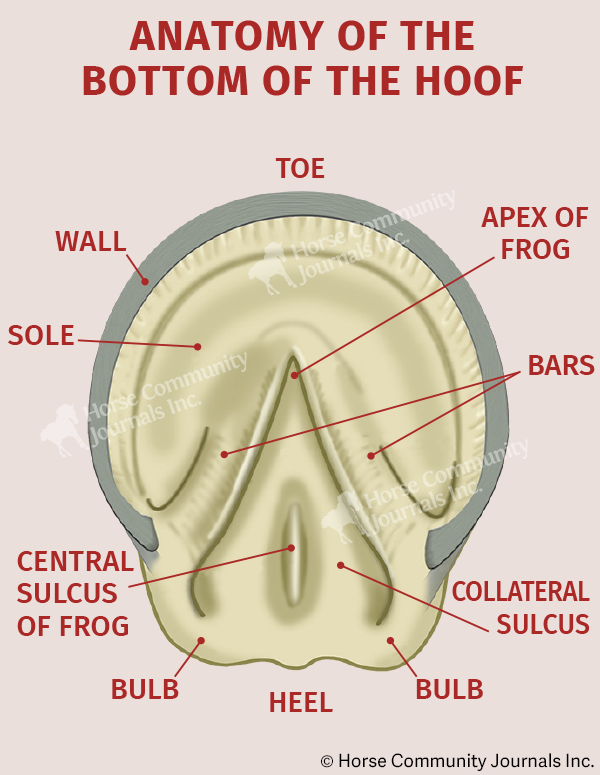
An understanding of the parts of the hoof is necessary to properly maintain it. By knowing how the healthy hoof looks and functions you’ll more readily notice potential problems and be able to communicate concerns to your vet and farrier.
Prevention
The horse should be provided with a clean, dry environment, both in the stall and in the paddock or field. Hooves should be cleaned daily, paying close attention to the central cleft of the frog and the bars. A consistent schedule of farrier care will help keep the feet healthy and guard against overgrown or contracted hooves.
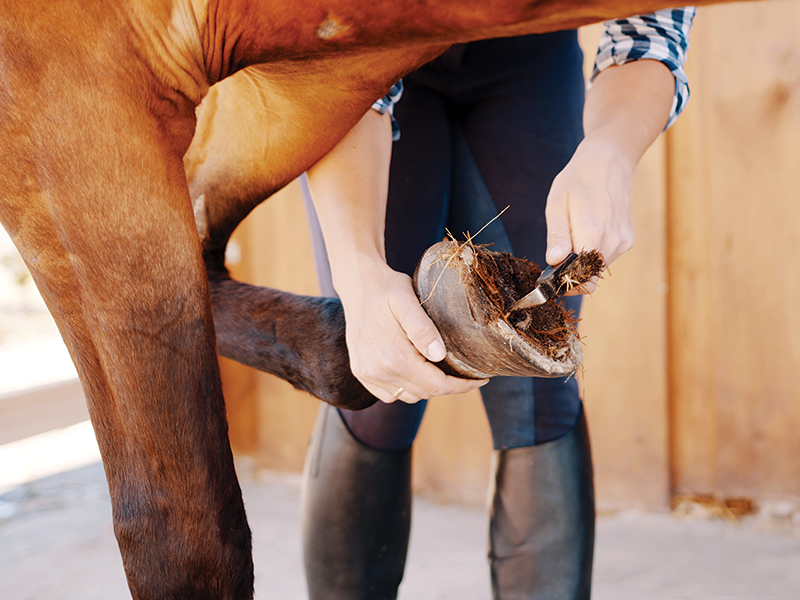
A horse standing in a stall without regular turnout can be at a higher risk of thrush. It’s important to clean hooves regularly rather than let the horse stand with organic material packed in. Photo: Shutterstock/CameraCraft
Good stable management practices and a clean environment are the best defense measures against thrush.
Related: Good Hoof, Bad Hoof
Related: Understanding Laminitis
Published with the kind permission of Equine Guelph.
Main Photo: Regular turnout and exercise in a clean, dry environment help the hoof to self-clean. Credit: Zuzana Tillerova



